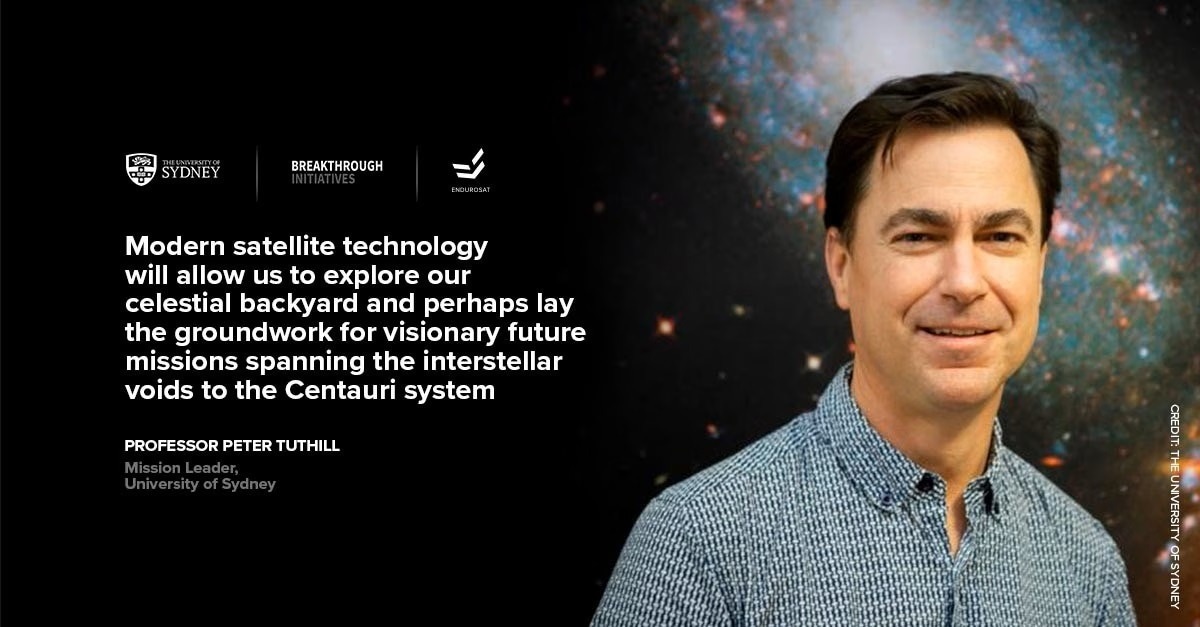The University of Sydney has entered into an agreement with EnduroSat, a renowned supplier of microsatellites and space services, to investigate the possibility of extraterrestrial life, beginning with the Alpha Centauri star system, the nearest neighboring star system.

TOLIMAN Mission Leader Professor Peter Tuthill is from the School of Physics. Image Credit: The University of Sydney
The project, supported by the California-based Breakthrough Initiatives, was given the name TOLIMAN after the star’s ancient Arabic name. Alpha Centauri A and B, which are just four light years away from Earth, are two Sun-like stars in the system that will be searched for planets in the habitable, or “Goldilocks”, zone.
That is tantalizingly close to home. Astronomers have discovered thousands of exoplanets outside our own solar system but most are thousands of light years away and beyond our reach.
Peter Tuthill, Mission Leader and Professor, University of Sydney
Tuthill added, “Modern satellite technology will allow us to explore our celestial backyard and perhaps lay the groundwork for visionary future missions spanning the interstellar voids to the Centauri system.”
Exoplanet discovery is a significant technological challenge, even for large space telescopes. The mission is challenging for a mini satellite. The team is creating a small, custom-designed space telescope that can take incredibly accurate measurements to do this.
The satellite must fit the telescope into a small space (just 12 L) while maintaining thermal and mechanical stability with pinpoint accuracy using active systems. EnduroSat will provide the delivery method for the mission’s custom-built mini satellite.
Tuthill further added, “Any exoplanets we find that close to Earth can be followed up with other instruments, giving excellent prospects for discovering and analyzing atmospheres, surface chemistry or even fingerprints of a biosphere—the tentative signs of life.”
EnduroSat’s flight-proven MicroSat technology can downlink payload data at 125+ Mbps, which is important for downloading all data during extended observation periods.
We are exceptionally proud to partner in this mission. The challenges are enormous, and it will drive our engineering efforts to the extreme. The mission is a first-of-its-kind exploration science effort and will help open the doors for low-cost astronomy missions.
Raycho Raychev, Founder and Chief Executive Officer, EnduroSat
Dr. S. Pete Worden, Executive Director of Breakthrough Initiatives, added, “It is very exciting to see this program come to life. With these partnerships, we can create a new kind of astronomical mission and make real progress on understanding the planetary systems right next door.”
Professor Tuthill has a track record of developing high-precision instrumentation and projects for global astronomy initiatives. His direct instrument design work on NASA’s James Webb Space Telescope project, which has ushered in a new age in observational astronomy, is the only one that has been headed by an Australian scientist.
He contributed to the development of James Webb’s NIRISS Aperture Masking Interferometry mode, responsible for the high spatial observational resolution essential in the search for exoplanets.
Tuthill concluded, “My experience helping to develop technology for James Webb will be hugely useful in designing observational equipment for the TOLIMAN project.”